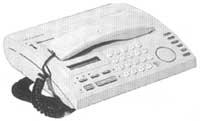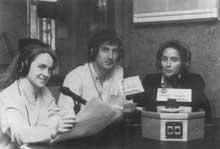Fax and ready!
1993/06/01 Trialti, Carlo Iturria: Elhuyar aldizkaria
Most people consider fax as a byproduct of the electronic age. The truth is that when the Industrial Revolution was in full boil it occurred to a Scottish inventor.
Although fax has spread over the past decade, this year marks its 150th anniversary. It was patented on 27 May 1843, 30 years before the phone. However, if the phone expanded rapidly as a fundamental business tool, the market success of the machine that can issue images and documents from one office to another for a few seconds has been greatly delayed.

The inventor of the idea was Alexander Bain. Bain was born in Scotland in 1810, on a remote farm in Caithness. He was a student of a Wick watchmaker and it was he who invented the first electric watch that used electromagnetism to push the pendulum back and forth. He then headed to London and patented his fax machine. The basic principle is very simple: the image to be sent is divided into fine lines, each of them consists of black and white sections, and can be emitted by telegraph, as well as the points and lines of the Morse code, and once received it is recovered. (see image next page).
Although his machine is thoughtful, Bain never developed it. He realized that it was much faster to send the Morse code of the letters composing the message than to fax it. Compared to the long chain of black and white stripes needed to issue the word “fax”, the Morse code is simple:
- - - . - - - . ... -
In 1846 Bain combined in the transmitter a perforated paper tape with Morse code and a saturated electrolytic paper invented in the receiver to perform a “chemical” telegraph. This telegraph kept for a long time the world speed record of 253 words per minute. He also developed other print telegraphs, pioneers of the teletype, but the patent war was mixed with Charles Wheatstone in Britain and Samuel Morse in America, both with patented telegraphs. He lost all his fortune in time, but in 1872 the British government recognized his achievements and extended a small pension. He died five years later in a house for the incurables of his hometown.
Metal messages
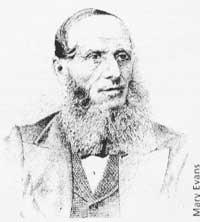
In 1985 the first fax service was extended between Paris and Lyon, using fax machines based on Bain principles, perfected by the French engineer L’Abbé Caselli. There is a machine of so-called panellists in the “Musée des Techniques” in Paris. The message to be sent by fax is written on a thin sheet of metal with “insulating” ink, only in contact with the needle where there is no ink. The metal sheet is wrapped in one of the curved side plates of the machine.
A long pendulum sends the needle forward and back over the plate and at the end of each oscillation has a mechanism to move the needle with a line. The receiver is like the Bain saturated paper machine on the curved plate. In order for the two needles to move exactly at once, Caselli placed at their ends a rope stopwatch to release the pendulums at the beginning of each line. The quality of the image obtained by the panthegraph is excellent.
The technical achievement of the panthegraph was not successful in the market. By then, the telegraph offered a quick and easy way to send messages, and the speed of the business world was quite slow to not have to secretly send pictures or drawings. The service was suspended in 1870, coinciding with the beginning of the Franco-Prussian war.
In 1878 the British Post Office chose a facsimile apparatus called telewriter that functioned completely differently. In the transmitter there was a pen, connected by a pantograph to two variable resistors. These moved another pantograph that was attached to two electromagnetons in the receiver to copy the movements of the emitter's pen. This type of office machines, known as appliances, were manufactured until the 1960s.
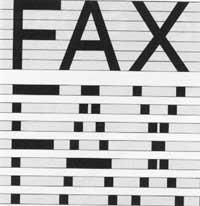
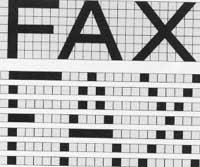
However, such devices could not issue paper and ink images. This limit was exceeded in 1878 when it was discovered that the resistance of the selenium element was reduced when the light sounded. The image is illuminated with a fine beam of waxes and the reflected light illuminates the selenium cell. The white parts of the image reflect more light than the black ones, changing the cell's resistance. This system can emit any black and white image. Also photos. In 1906 the German physicist Arthur Korn developed the first photographic fax machine.
In the receiver a sensitive galvanometer moved a shutter over the light changing the intensity that reached a moving part of photographic paper. This created variable width light lines for image reconstruction. At that time synchronous motors were developed that could precisely control speed. Korner managed to overcome Caselli pendulums and machines that looked like small lathes.
In the mid-1920s many inventors greatly improved the fax procedure to send photos over the phone, so usually they began to use faxed photographs by the newspaper, using lathe machines. But there were still serious limits. Conventional long distance phone lines had devices that improved the quality of the voice emitted, but these devices distorted fax messages, forcing you to use “adapted” phone lines especially for fax transmissions. High speed and high definition also made speed regulation important. Therefore, a transmitter/receiver needed a complete room full of appliances.
Fax Covers
Newspapers are the largest user of faxes. Agencies like the Associated Press send daily photos of satellite newspapers around the world. Newspapers provide 250 photos selected daily on the computer screen and print all available. Many newspapers, such as the International Herald Tribune, are sent entirely by fax and satellite from publishing offices around the world to local print shops.
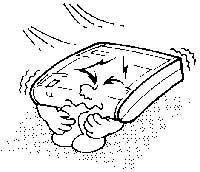
Weather offices are also large users of fax technology. Weather maps are sent from 1950 via this route. The British Meteorological Office continues to use old fax machines that need special telephone lines to send weather maps and satellite images of clouds to regional centers. They still use Bain's saturated electrolytic paper to print the images.
While Facsimila was unusable for these specialized jobs, a small effort was made to develop an office fax machine, as teleprinter technology, a pioneer in Bain and Wheatstone, was able to send messages across the world sharply. And although electronics began to improve in the 1950s, few companies (especially Magnavox in Germany) started developing office fax machines.
After succeeding with the office photocopier, Xerox developed in 1964 the fax system called Xerography for Long Distances, acquiring the rights of Magnavox machines and selling as a telecopier. The phone had to be placed on a side support of the machine, since until the 1970s the telephone companies did not allow the direct connection of any device in their lines. The machines, in addition, were very expensive, took 6 minutes to send a single page and could only communicate with other telecópicos, being incompatible the machines worked differently.
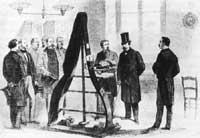
Sessions to reach an international standard began in 1960. Each manufacturer wanted its own as standard, but no international telephone company considered it. After long discussions, the first American standard appeared in 1966. Although they announced as triumphs, the copy received by conciliation problems was fully extended or the page edge sections were lost. Two years later, the International Telegraph and Telephone Consultative Committee, CCITT, held its first session to develop an international standard: Group I.
Faxes could be sent from Europe to America, but not the other way around, and no one could send faxes from France or France. In another eight years, in 1976, the Commission produced the first real international standard (Group II), but the machines were so complicated and expensive that most users followed with Group I. Finally, in 1980 the Commission produced the current standard: Group III.
The base of the fax machine is simple. The image to be transmitted is not divided as before into lines. Each line is also divided into small squares that can be white or black called “pel” (see figure 1). Group III machines have a maximum resolution of 203 hairs per inch (and 196 lines per inch), which means that defects are not overly noticeable. The advantage of all digital systems is that there is no ambiguity: the image is taken as emitted, even if there is a certain amount of interference in the line.
Improving speed
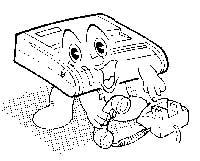
The transmission speed can be increased by ingenious pels union encodings. Instead of emitting rare pel, the machine emits how many pels of the same color follow each other. For example, six blacks, three whites, one black, five whites, one black, five whites and one black. American mathematician David Huffman developed a code for all possible black and white sequences. He attributed the shortest codes to the most common sequences of a common chart. For example, when two black boxes appear together, their code is short: 11; 19 boxes that appear consecutively in very few occasions, so the corresponding code is much longer: 00001100111. Huffman's code is why faxes aren't printed at constant speed, so written pages go faster than those containing detailed photos or drawings.
Digital codes can continue to be compacted, comparing the succession of pels of a line to the next paragraph, and whether they are equal by issuing an abbreviated code. In practice, consecutive lines are very similar and an effective form of compaction. However, if an error is filed (due to a noise on the phone line or) it will expand by the page below. To avoid this, complete lines of the Huffman code are issued for all other lines. Still, the compaction ratio of fax machines remains 20 to 1.
Group III machines carry a path of error correction. There are 1728 hairs on a line on A4 paper and at the end of each line the receiver counts all the hairs, to see if they are 1728. If they are not, most machines print the previous line smoothing the error. Most last time machines have memory and digitally store the entire page before sending it. The receiver also digitally accumulates the sheet and requests that all lines that do not have 1728 hairs be re-sent before printing.
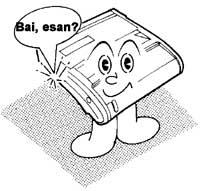
The first digital fax machine, Dacom Rapidfax, was born in the USA in 1974. But those who really made it accessible were the Japanese. Japanese uses more than 2,000 characters while international teleinprima code supports only 56 characters. The Japanese encouraged the convenience of sending handwritten messages. First, large-scale integrated circuits were developed to carry out digital encoding and compression. Then he seized another American invention, the thermal printer.
Work with a known, bright and thin fax paper. When heating this paper blackens (try to put a piece in front of an electric fire). The fax machine carries a line of very small electrical elements that heat up three hundred times per second and have the ability to cool again. The only moving part of the printer is the stepper motor that moves the paper over the line of elements (one row at a time). This simplicity, in addition to lowering the printer, makes it very reliable.
One of the most complicated parts of fax sending is the “dialogue” of the machines at each end. This procedure, which generates a special sound in the fax txioka, is like starting a telephone conversation. This connection procedure is performed at a relatively low frequency (300 bits per second), but sending the fax itself is much faster. Before sending the message, machines strive at maximum speed, i.e. 9,600 bits per second. Thus, if it is not taken at all well, it is tried with slower and slower speeds, down to 2,400 bits per second.
The current fax transmissions produce a noise similar to a txistada, since the digital bits are not emitted one by one (but in groups of four), modifying the phase and amplitude of the final signal. Telephone lines are designed to work at frequencies below 4,000 Hz, but the 9.600 bit emission signal using amplitude and phase thus should only change 2,400 times per second.
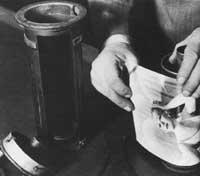
Its extension has meant an important investment in its development. All page memories containing multiple machines, in addition to ensuring error-free transmission, can store confidential faxes until the user is encoded. On the other hand, machines using common paper are becoming more and more normal. The best-known models use expensive laser printing mechanisms, but technicians are developing a source tap enough to print all the hairs on one line at a time.
Standard in doubt
Machines that transmit faster and higher resolution are being created. CCITT published in 1984 an international standard for Group IV machines. This standard is designed to work with digital phone networks that are being installed worldwide, raising the number of bits per second from 9,600 to 64,000. Group IV machines are capable of issuing about six pages per minute due to increased speed, with a resolution of 300 inches. They also contain sophisticated algorithms to turn grey shadows into models of so-called uncertainty points, which greatly improve the reproduction of photographs.
Although the results seem spectacular, Group IV machines also have disadvantages. The connection procedure is very complicated, since it has implemented facilities for telex and e-mail, since the success of Group III had not been foreseen in time. Satellite connections were not as common as they were today in 1984, and since then it has been shown that Group IV signals are not transmitted correctly by satellite, which creates major drawbacks for international communication. While some manufacturers have committed to boosting Group IV, others are pushing the improved Group III standard. By changing the definition method of each four-bit emission group, engineers have reached a speed of 14,400 bits per second on Group III machines, considering the speed of 24,000 possible.
Despite technological improvements, the influence of fax has gone very far. The ease and speed of engineering imaging allows companies to make subcontracts around the world that they previously could not. The fax enables the individual to receive and transmit written information spontaneously, which can have a political dimension: Students from Tianmen Square and Boris Jeltsin, besieged in the Russian Parliament, also used the fax to maintain contact with the outside world.
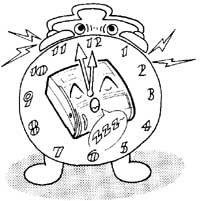
The success of the fax allows to establish an office without papers, that is, an electronic office. A note sent by fax, often handwritten, generates information of a type incompatible with computerization. Email, which sends digital information directly from one computer to another, takes longer on the market than the fax machine, but has not achieved similar acceptance.
The fax machine, in addition to being compatible internationally, is also a terrace of use. Despite the complexity of digital compression and internal connection circuits, pressing a button is all you need to get it going. Few devices with computer technology have achieved such an elegant and interactive simplicity. It may be more “smart” than expensive computer technology incompatible with the same fax machine.

Gai honi buruzko eduki gehiago
Elhuyarrek garatutako teknologia





